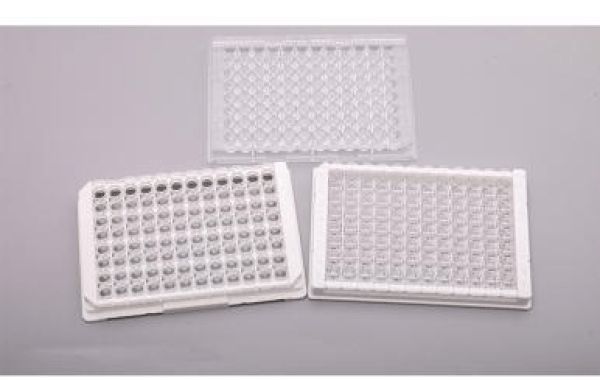Choosing the right volume capacity for your ELISA microplate depends on several factors related to your samples and reagents:
Sample Volume
- Standard Volume: The most common volume used for ELISA samples is 100 microliters (µL). This volume is often used because it provides a good balance between sensitivity and well capacity.
- Limited Sample Volume: If you have limited sample volume, you can consider using microplates with a well capacity of 50 µL. These plates allow you to run the assay with fewer samples while still maintaining good sensitivity. However, be sure to check your ELISA kit instructions for compatibility with lower volumes.
- Large Sample Volume:If you have a large volume of samples available and need to run multiple replicates or test a larger number of samples, you might consider using 384-well or even 1536-well plates. These plates offer higher throughput but require careful optimization due to the smaller well volume (typically 16 µL or less).
Reagent Volume
- Standard ELISA Protocols: Standard ELISA protocols typically require similar volumes for washing buffers, conjugate, and substrate solutions as the sample volume (often 100 µL).
- Dead Volume: Keep in mind the "dead volume" of your pipettes. This is the minimal volume that remains in the pipette tip after dispensing. You'll need to account for this when determining the appropriate well volume to ensure enough reagent is dispensed for the assay.
Number of Replicates and Standards
- Replicates: Most ELISA experiments require running samples and standards in duplicates or triplicates to improve data reliability. Factor this into your well volume needs.
- Standards: ELISAs often use a standard curve to quantify the target analyte. Consider the number of standard dilutions you need to include and how many wells each dilution will require.
Evaporation
- Evaporation Loss: During the ELISA incubation steps, some evaporation of liquids can occur. This is especially true for longer incubations or high temperatures. Choosing a good volume that allows for a slight margin of error can help minimize the impact of evaporation.
By carefully considering these factors, you can choose the ELISA microplate volume capacity that best suits your specific experiment and sample availability. This is only one part of choosing the right ELISA.








